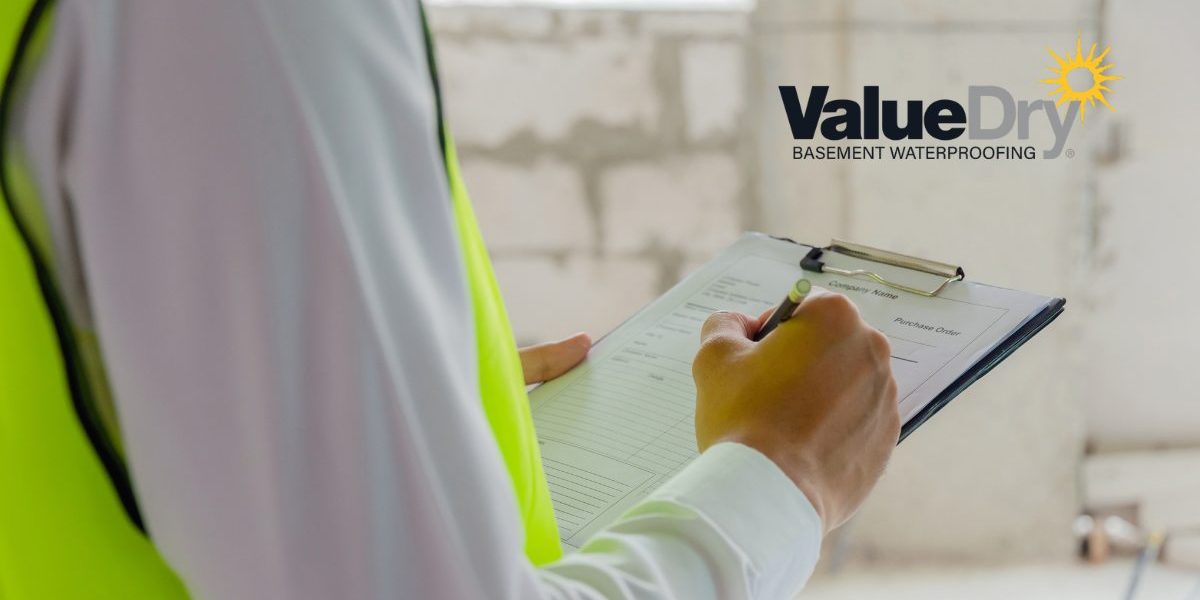What We Look for in a Basement Inspection
- August 25, 2022
- No Comments
The majority of basements that are more than 10 years old will have water intrusion issues at some point in the near future. That’s because the “damp-proofing” sealant the builder coated the outer foundation walls with has deteriorated, allowing groundwater to infiltrate into your home’s foundation.
If you want to protect your home and your family’s health, you’re looking for solutions. The first step towards reclaiming your territory is a basement inspection by a reputable basement waterproofing company. This inspection is more thorough than one a general home inspector might do.
Here’s what we look (and smell) for:
Damp, Musty Smell
The first thing an inspector will do is take a deep breath through the nose as they descend the stairs to your basement. Are they hit by a damp, musty smell? That’s the first indicator you have a wet basement.
High Humidity
An inspector may also take a humidity reading as part of the inspection. In general, the humidity in your basement should be between 30 and 50%. Anything higher than 60% is considered excessive humidity. It’s yet another sign of water intrusion in your basement.
Cracks in the Foundation Walls or Floor
The inspector will look for cracks in your foundation walls as well as the basement floor. If you have a finished basement, they will check the furnace room, which generally is unfinished. Cracks in the walls and floor indicate hydrostatic pressure from waterlogged soil on the exterior of your basement. This pressure builds and eventually causes the cracks, allowing water to seep in through the cracks.
RELATED READING: Types of Foundation Cracks and What They Mean
Bowed Basement Walls
Bowed basement walls indicate that the water intrusion has been going on for a long time. They are also a sign that you need immediate repairs to keep the wall(s) from caving in. If an inspector finds that you have a bowed basement wall, they will recommend foundation repair before any additional waterproofing measures.
RELATED READING: Why a Bowing Basement Wall Requires an Urgent Fix
Puddles or Trickles of Water
If you have puddles or trickles of water on your basement floor after it rains, this is another sign of water intrusion. If the inspector sees a puddle or trickles of water with no other obvious sign of trouble, they will check to see if water is coming perhaps from a plumbing leak or leaky water heater.
Wet Carpet
If you have a finished basement, one of the signs of water intrusion through the floor or at the level where the walls meet the floor is wet carpet. The inspector may ask if they can pull up a corner of the carpet to see what is going on underneath. Again, we will want to be sure the wet carpet isn’t due to something like a leaky water heater. If the carpet tack strips show signs of rust, this is not a new problem and it has happened before. Rust does not appear overnight.
Efflorescence
Efflorescence is a big word for something pretty simple. It’s a chalky, white substance that can collect on your block foundation walls. It’s formed when water seeps into the walls or floors and then evaporates, leaving a crystal salt deposit behind. Even if you have sealed or painted your walls, eventually the efflorescence will break through.
RELATED READING: Basement Waterproofing Glossary
Water Damaged Basement Finishings
The inspector will also look for water damage and decay on your drywall and baseboard. Water damage, decay, and mold can be due to longstanding water intrusion or the result of a flooded basement. Mold thrives in damp and dark areas.
Damp Walls
An unpainted or unsealed basement wall will have a darker area if it is damp. Think about how a wet sidewalk changes color. You’re most likely to see this in a corner of your basement. The walls may feel damp to the touch. The inspector will make note of which walls seem to be having the most issues. If you have drywall in a finished basement, the inspector may feel them see if the drywall is at all damp. This would indicate water intrusion into the foundation walls.
Current Waterproofing Measures
Some of the homes our inspector’s visit already have a sump pump or some other form of waterproofing. We get a call when the existing system isn’t keeping up. This can be the result of shoddy installation but may also be due to a changing water table and changing climate.
We Make Recommendations Tailored to Your Basement
After a thorough inspection, we will make basement waterproofing recommendations specific to your basement. We’ll go over everything in detail and explain the reasoning behind our plan of action. We will also answer any questions you have so that you can make an informed choice.
Our goal is to help you protect the structural integrity of your home and improve the air quality at the same time.
Schedule a FREE Basement Inspection
If you’ve noticed any of these signs, it’s time to call in the professionals. A wet basement will only cause you more problems if you put off dealing with it. To schedule your FREE basement inspection, call (888) 768-2583. One of our inspectors will perform a thorough inspection of your basement and make recommendations based on your specific situation. We serve homeowners in Maryland, Washington DC, Northern Virginia, and parts of West Virginia and Delaware.


